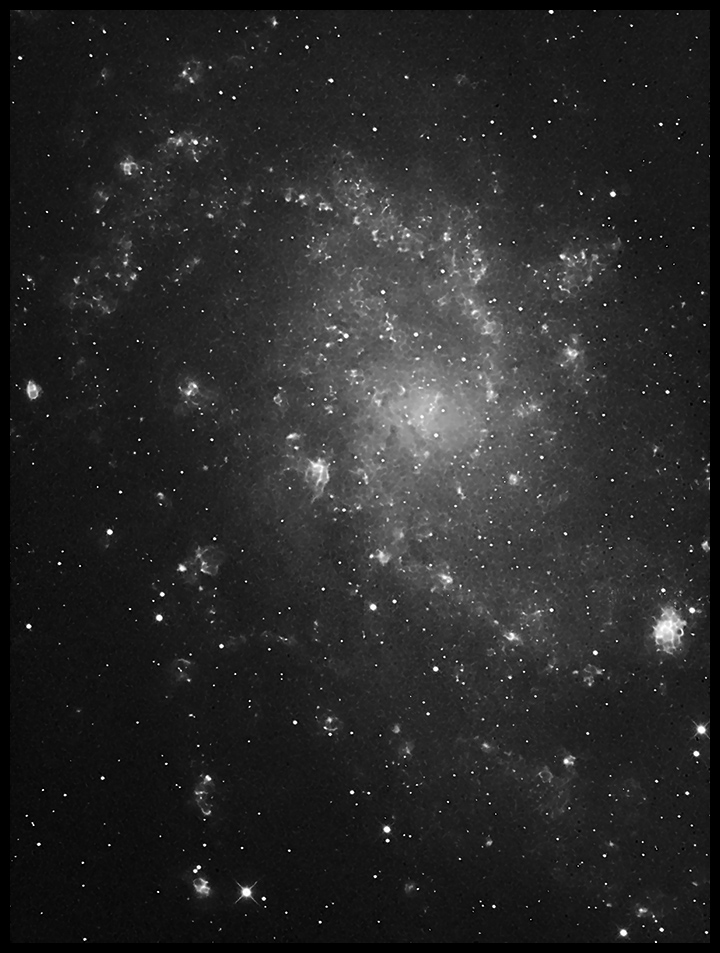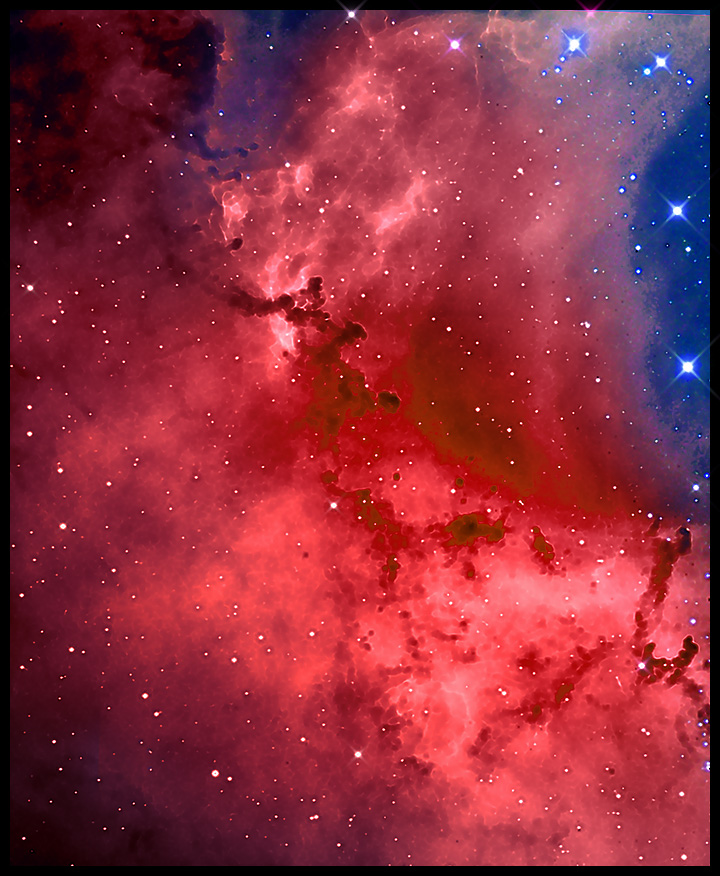01/18/2014. I'm doing M33 tonight (yes, again.) My rewiring fugue seems to have worked out well. The CCD is once again powered through the 12v DC adapter. RoboFocus worked like a charm. I used the Bahtinov mask to dial in the focus on Caiph in H-a. The CCD tonght is turned to 270 degrees and cooled, as usual this winter, to -20°C. I still need to get rid of excess moisture to go lower than that. I'm not finding the bright guide stars I expected for M33 (to reproduce the framing in order to add data, slew to IC 142). I do have a fainter guidestar, made serviceable by the excellent performance of the Mach1GTO mount. Guiding in H-a required 30 second integrations, but that's no problem.
There's an unpleasant granularity to these images (which I'm concealing by showing them small). I'm thinking that HaGB isn't quite the way to go. There are, I think, too few images being stacked to eliminate noise sufficiently. (Moderate haze and a nearly full Moon aren't helping.) Maybe an L layer is needed, or perhaps H-a can be made to serve that purpose. Try treating H-a as L, then reuse H-a as R, and mix LRGB as usual? Treat the H-a differently for the different purposes? Mess with this. The following are "naive" HaGB composites (deconvolved and stretched data in H-a simply replaces the R channel). Better to come, I trust.

M33, HaGB
5x1800s Ha (2h30m), 3x300s GB (30m total)
I picked up the Rosette as it emerged from Meridian Pine. I took RGB data before H-a, but only H-a, G, and B comprise this effort:

NGC 2278, HaGB
5x1800s Ha (2h30m), 3x300s GB (30m total)
1/19/2014. Yes, it's the haze. Transparent skies are good. So is less moonlight, but the transparency is the big difference. Here are the same two subjects on a much better night. Also 30 minutes more exposure on each, with spot on focus. It's really nice when all the gear works as it's supposed to without drama or delay:

Hydrogen in M33
6x1800s (3hrs) H-a
Color to come.
(See Next Page)

NGC 2237, detail of the Rosette Nebula
6x1800s H-a (3hrs),
3x300s GB (30m total)
Except where noted, deep-sky photos are made with an SBIG ST2000XM CCD behind a 10-inch Astro-Tech Ritchey-Chretien carried on an Astro-Physics Mach1GTO. The CCD is equipped with Baader LRGB and 7nm H-a filters. The internal guide chip of the CCD most often keeps the OTA pointed in the right direction (I'll let you know when a Meade DSI and a separate OAG or guidescope takes its place). Camera control and guiding are handled by Maxim DL 5.12. The stock focuser on the AT10RC has been augmented with Robofocus 3.0.9 using adapters turned on the lathe downstairs. Maxim performs image calibration, alignment, and stacking; Photoshop CS4 and FocusMagic 3.0.2 take it from there. Gradient Xterminator by Russell Croman and Astronomy Tools by Noel Carboni see their share of work, too. Beginning in May 2013, PixInsight has taken over some of the heavy lifting for transfer function modification and deconvolution.
:: top ::